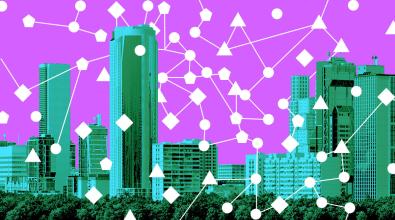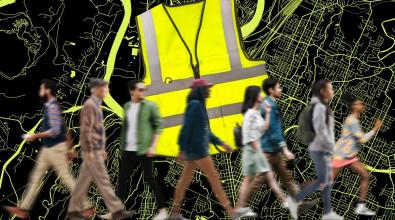 Read More
Read More
How one country's cities are taking control of their AI destiny

Image by Cath Virginia for Bloomberg Philanthropies
Listen to This Article
Across Chile, local governments are showing that progress with using artificial intelligence to improve operations and services does not have to wait for national funding or even new staff capacity. By teaming up to build new tools, sharing ideas that work, and shaping the development of new large language models, these cities are creating practical, resident-focused use cases and doing so faster than they could alone. It’s a Chilean spin on the trend toward AI coalitions that have been assembled recently in other regions around the world. And the result offers lessons for local leaders everywhere about how cities can move beyond AI pilot projects toward solutions that travel—fast.
Collaboration as an advantage.
Earlier this year, 15 Chilean municipalities came together in Santiago to compete for national funding that would support their development of new AI-powered solutions. But what began as an in-person exercise—each city defined a local problem and prototyped a new tool that could help solve it—has evolved into something more enduring. As officials compared projects and challenges, they found common ground and began forming partnerships to keep developing ideas together back at home.
The most effective learning, they found, happens when cities build side by side. And this kind of collaboration is also a way to speed up the process of moving from ideation to real-world impact with AI tools, and to reduce reliance on other levels of government.
For example, the city of Maipú, recently recognized with the Bloomberg Philanthropies What Works Cities Certification for exceptional data practices, arrived at the Santiago competition hoping to use AI to streamline procurement. On the ground, officials developed a prototype of what they call LicitaBot, a digital assistant that automates purchasing processes, and were awarded one of the first spots in line to get help from the national government in developing it. But the greater and more immediate value came afterward, when neighboring Las Condes offered to co-develop the tool, drawing on its own AI experience. Together, the cities are advancing the project without waiting for central-government support, showing how peer partnerships can accelerate implementation and lend new legitimacy to emerging solutions.
As Maipú official Vania Palma explains, “No one understands a city better than another city.” That ethos, she adds, reflects Mayor Tomás Vodanovic’s broader approach to innovation: before building something new, look first to what other municipalities have already tried and then improve on it collectively.
Designing AI with others in mind.
Even when they are not developing tools jointly, local leaders across Chile are beginning to design AI solutions with future regional collaboration in mind. That’s because they see value for residents in creating a network where cities constantly share and help each other improve their upcoming AI solutions.
Puerto Varas, for example, is prototyping an AI-assisted scheduling system to help residents secure medical appointments more easily. The tool is also intended to improve internal communication so that residents who must travel long distances to attend in‑person appointments have their care guaranteed. From the start, the city’s public health department has aimed to make the tool adaptable for other municipalities, recognizing that the value of a local innovation increases when others can reuse it.
“We believe it’s important that these kinds of AI solutions eventually become open-source tools that can be shared with other cities—even if that happens later in the development process,” says Roberto Sánchez, a public health officer in Puerto Varas. “First, because that way more people can benefit from them, and second, because it allows the tools to evolve and improve by incorporating input from different localities.”
By anticipating reuse, the team is lowering long-term costs for neighbors and multiplying potential impact, a simple design choice that can turn a city’s prototype into a national asset—and encourage other cities to share their own ideas, too.
Adapting new technology to local needs.
Chilean cities are also working together to understand and apply the latest AI models. The idea is not to be passive recipients or purchasers of new tech, but work together to influence it as it takes shape.
For instance, one recent gathering in Santiago introduced cities to an early prototype of Latam-GPT, an emerging large language model trained on Latin American data and context. While developed nationally, cities explored how it could be used locally. Maipú, for example, hopes to link LicitaBot to the model so it better understands regional procurement rules and technical language. This sort of engagement shows how local governments can guide the next wave of AI technologies early, ensuring that new tools reflect their realities rather than requiring adaptation after the fact.
What is emerging across Chile is a pattern of trust and shared purpose. Municipalities are building new tools together, thinking ahead about how their ideas can help neighbors, and adapting technology to their own contexts. In doing so, they are demonstrating that collaboration is not just a way to exchange knowledge but a practical strategy for making technology work for people. When cities design with others in mind and stay connected to peers facing similar challenges, innovation spreads faster, costs less, and becomes more relevant to residents’ needs.

